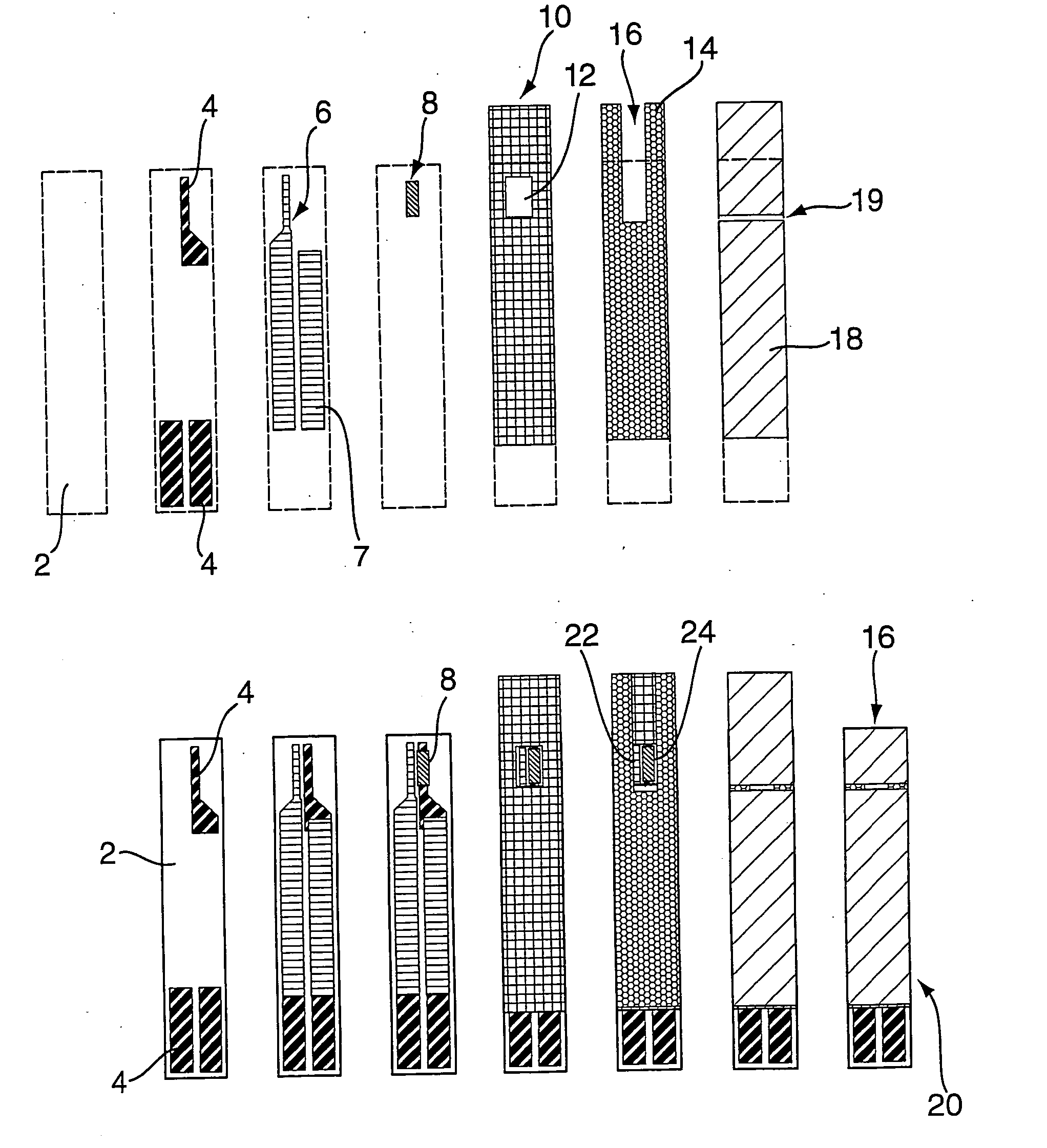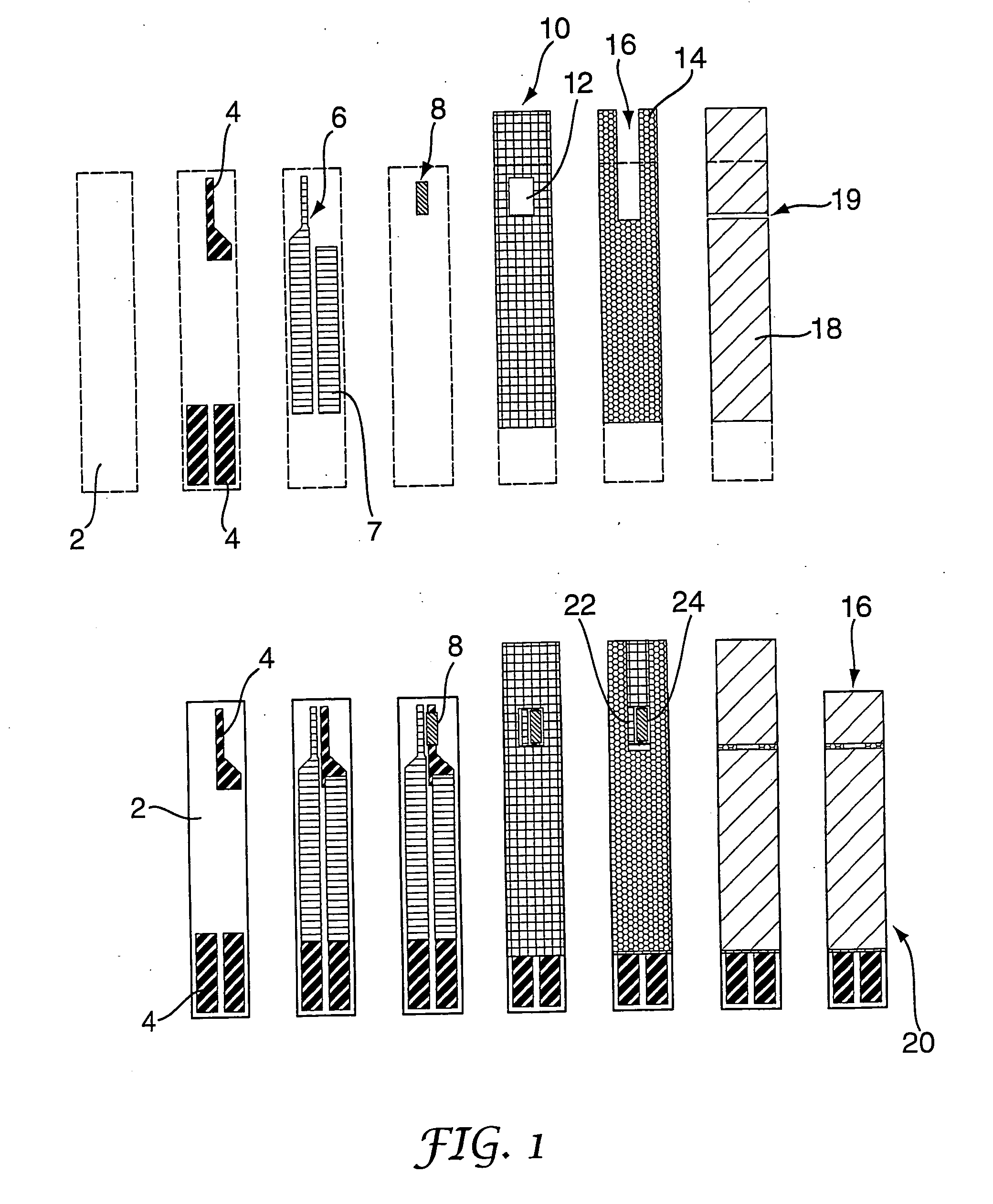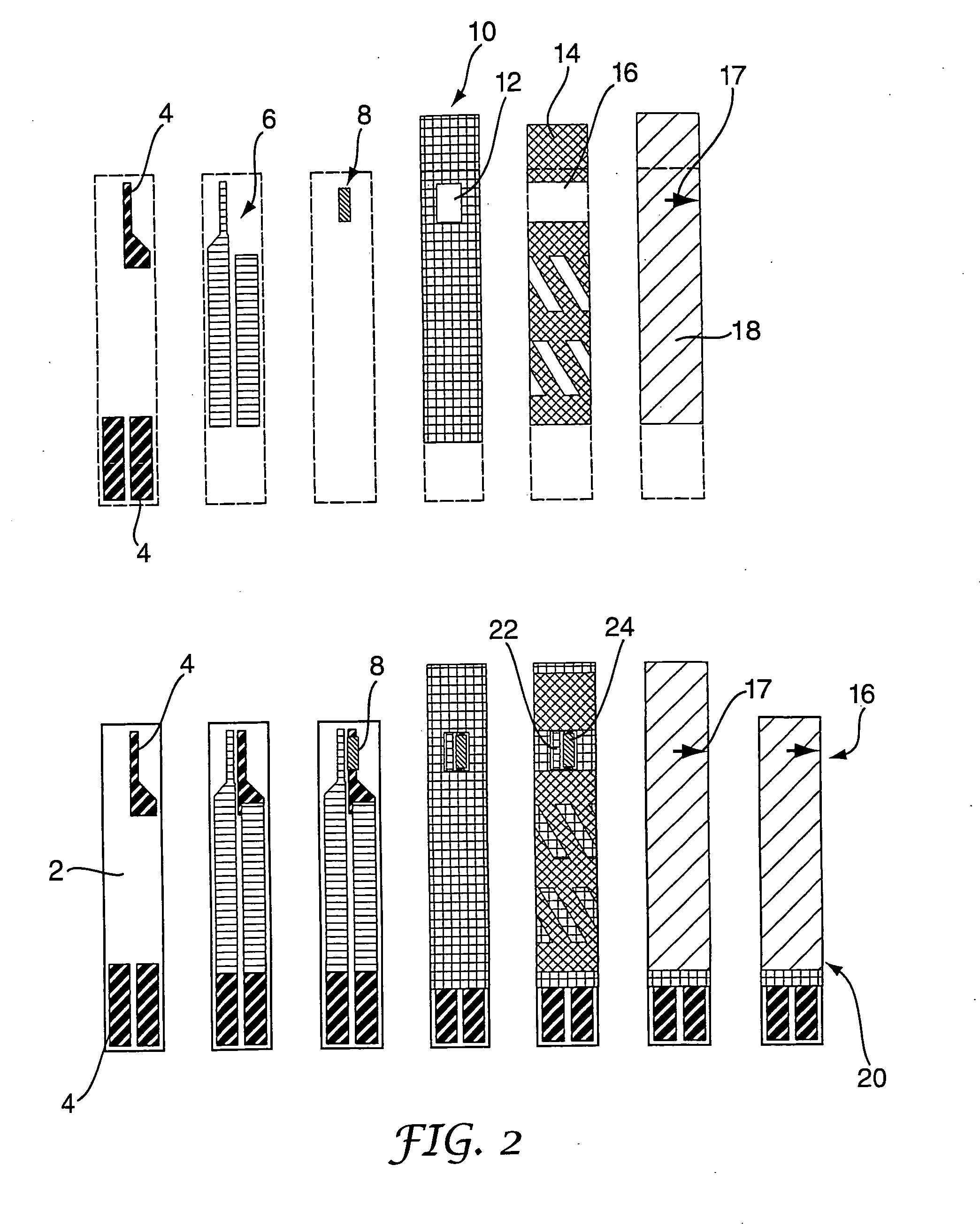Biosensor and method of manufacture
a biosensor and manufacturing method technology, applied in the field of biosensors, can solve the problems of increasing the response, reducing the accuracy of measurement, and achieving accurate readings, reducing the volume of coating fluid required, and facilitating the adjustment of ph
- Summary
- Abstract
- Description
- Claims
- Application Information
AI Technical Summary
Benefits of technology
Problems solved by technology
Method used
Image
Examples
Embodiment Construction
[0058] When used herein, the following definitions define the stated term:
[0059]“Amperometry” includes steady-state Amperometry, chronoamperometry, and Cottrell-type measurements.
[0060] A “biological fluid” is any body fluid in which the analyte can be measured. Examples include blood, sweat, urine, interstitial fluid, dermal fluid, and tears.
[0061] A “biosensor” is a device for detecting the presence or concentration of an analyte in a biological fluid by means of electrochemical oxidation and reduction reactions transduced to an electrical signal that can be correlated to the presence or concentration of analyte.
[0062]“Blood” includes whole blood and fluid components of whole blood, for example plasma and serum.
[0063]“Coulometry” is the determination of charge passed or projected to pass during complete or near-complete electrolysis of the analyte. The determination may be made using a single measurement or multiple measurements of a decaying current and elapsed time during e...
PUM
| Property | Measurement | Unit |
|---|---|---|
| volume | aaaaa | aaaaa |
| pH | aaaaa | aaaaa |
| volume | aaaaa | aaaaa |
Abstract
Description
Claims
Application Information
 Login to View More
Login to View More - R&D
- Intellectual Property
- Life Sciences
- Materials
- Tech Scout
- Unparalleled Data Quality
- Higher Quality Content
- 60% Fewer Hallucinations
Browse by: Latest US Patents, China's latest patents, Technical Efficacy Thesaurus, Application Domain, Technology Topic, Popular Technical Reports.
© 2025 PatSnap. All rights reserved.Legal|Privacy policy|Modern Slavery Act Transparency Statement|Sitemap|About US| Contact US: help@patsnap.com



